If you are the type that maintains lists of places you would like visit in your lifetime, most likely Angkor Wat is on it, or it should be. It is the very raison d'être to visit Cambodia for many people and with good reason. Despite the fact that V visited Angkor barely 4 months ago (as a side trip during a work-related trip to Thailand), it absolutely had to be on our itinerary.
While the temple complex called Angkor Wat is the biggest and most famous monument, it is but one of hundreds of monuments and temples within an area of 120 sq. miles. The ancient city is estimated to have been over three times that size at its peak. At the height of its power, 300 years before its collapse in the 15th century, the powerful Kingdom of Angkor controlled a large part of what is now Cambodia, Thailand, Burma, Laos and Vietnam.
The scale and audacity of the building program undertaken by the Angkor kings (mostly between the 9th-16th cent) would be breathtaking even if it were started in the totally mechanized world of today with heavy machinery at their disposal. These kings clearly had a long term vision and in most cases were thinking beyond their own lifetime.
The more imposing monuments, including Angkor Wat, are close to the town Siam Reap making it a convenient base. We had only 2+ days at our disposal so had to judiciously plan our time. Some sites are close to (within 1-2 km) each other while others are more far-flung, so tuk-tuks (essentially motorcycles with a roofed carriage that can seat 4 people) are efficient to get you around.
As you travel from site to site, one thing that strikes you is the variety; each temple is different and has its own personality. There is very little danger of being "templed out" in a short peroid of time. A detailed description of every site can easily be the subject of many blogposts, but most of that information is easily available online or at your nearest library. I'll stick to the basics about the key sites we visited to provide some context to the accompanying photographs, which hopefully have captured some of the magic.
Angkor Wat is said to be the largest religious structure in the world. It surely has the largest moat surrounding a structure of any size! Even ignoring the size, it is surely one of the world's wonders of art and architecture, the creativity exemplified by the extent and intricacy of the bas-reliefs on temple walls on all four sides. It began as a Hindu temple and was later converted to Buddhist use (as the patron kings themselves converted to Buddhism). In most cases, the Buddha statues are quite clearly additions to the temple, or at best, replace the statues of Hindu gods. The bas-reliefs themselves depict the great epics of Hindu mythology, the most famous include the battle of Kurukshetra from the Mahabharata, the battle with Ravana from the Ramayana, and the popular myth of the Churning of the Ocean of Milk to produce the elixir of immortality.
Angkor Thom, the last capital of the Khmer empire is a walled complex of several impressive temples and monuments. It starts right at the gate, actually four, one in each direction, with the magnanimous faces of Bodhisattva Avalokiteshvara staring out. The causeway is flanked by a monumental representation of the Churning of the Ocean of milk, 54 demons and 54 gods engaged in an epic tug-of-war on the causeway!
At the heart of Angkor Thom is Bayon, one of the more awe-inspiring temples that on a superficial glance may look like a pile of rubble but on closer inspection reveals 54 towers with 216 enormous smiling faces of Avalokiteshwara. Evidently they were deliberately carved to bear more than a passing resemblance to the patron king Jayavarman VII - a sign of power and control. The Bayon too has its share of interesting bas-reliefs on its outer walls, vividly depicting everyday life in 12th century Cambodia and the wars between the Khmers and the Chams (making a reappearance on this blog after My Son and Mekong Delta!).
Also at Angkor Thom is Baphuon, a monumental 200m pyramidal representation of mythical Mt. Meru that marked the center of the city that existed before the construction of Angkor Thom. Today it looks like the world's most difficult jigsaw puzzle as it is undergoing an ambitious reconstruction. Archeologists had meticulously prepared the blueprint for the restoration in the 1970s only to have the Khmer Rouge regime destroy all that hard work and making the restoration even more difficult today.
Other highlights at Angkor Thom include the Terrace of Elephants, a 350m long viewing terrace decorated with carvings of parading elephants that was used as a stand for public ceremonies and Terrace of the Leper King, (named so because it is believed that at least two of the Angkor kings suffered from leprosy) where the front retaining wall is decorated with five tiers of meticulously executed carvings of seated apsaras.
Of the many of the images that capture ones imagination and entices one to visit, those of Ta Promh surely must be the top of the list. Built by the King Jayavarman VII as a shrine to his mother, it is a temple of towers, enclosed courtyards, and narrow corridors with ancient trees towering overhead, their leaves filtering the sunlight and casting a greenish hue over everything. What is impressive though is the sight of huge powerful trees with massive roots literally strangling the temple walls and buildings, causing them to crumble in place! There is poetry in the idea that the jungles that the powerful Khemer's cleared to build this fascinating temple now have the upper hand and are reclaiming it back.
King Jayavarman VII was an equal opportunity king and built an equally impressive temple, Preah Khan, in memory of his father. A maze of vaulted corridors it has long passageways running east-west and north-south, that provide an excellent persecutive of its overall size. Most of the structures here too are lichen clad giving it the same abandoned look like Ta Promh. But there are many interesting carvings that we were able to hunt down including a reclining Vishnu and beautiful dancing apsaras on the lintels of several doors, some in excellent condition.
One of the more far-flung sites that is a jewel in the crown of Angkor art is Benteay Srei, a compact temple cut from pink sandstone that contains some of the finest stone carvings anywhere. This temple, anywhere else in the world, would on its own merit, be a destination that would be worth traveling miles for.
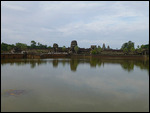


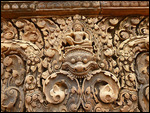

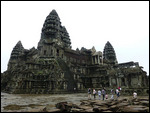
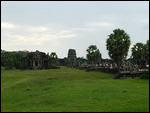
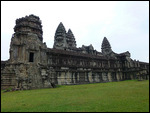
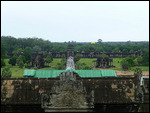
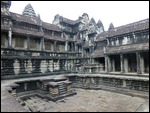
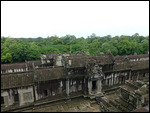
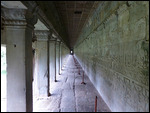
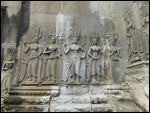
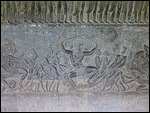
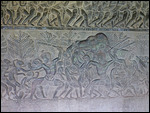
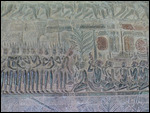
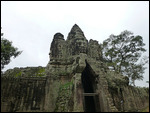

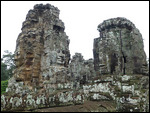
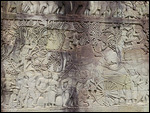
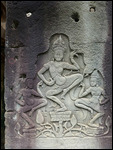
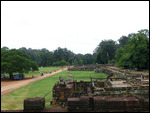
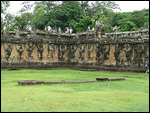
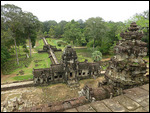
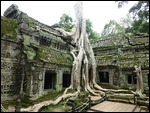
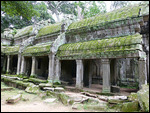

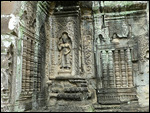
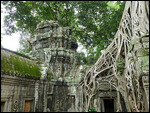
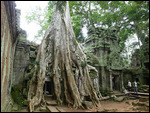
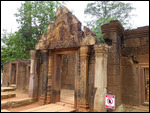
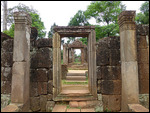
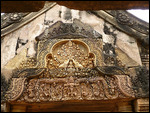
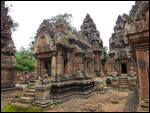
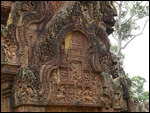
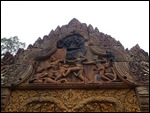
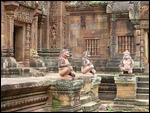
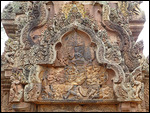


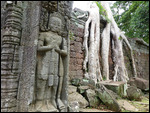

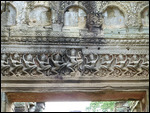
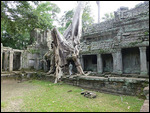
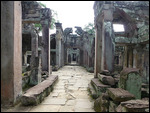
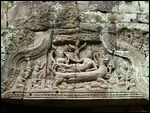
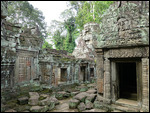

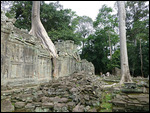
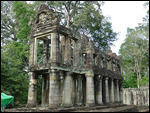
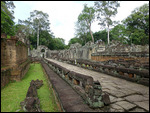
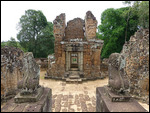

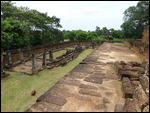
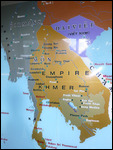
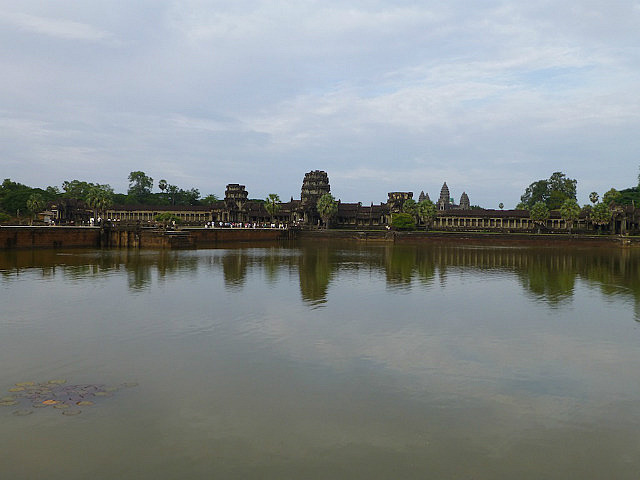

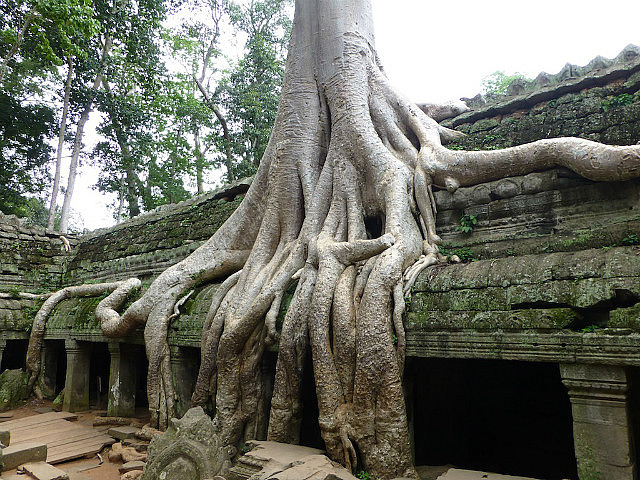

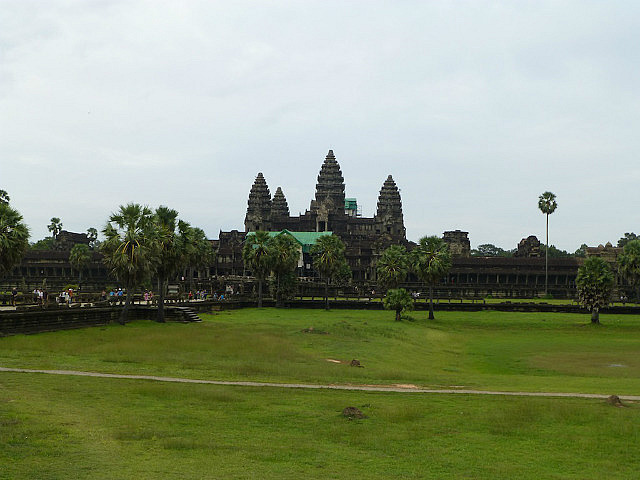
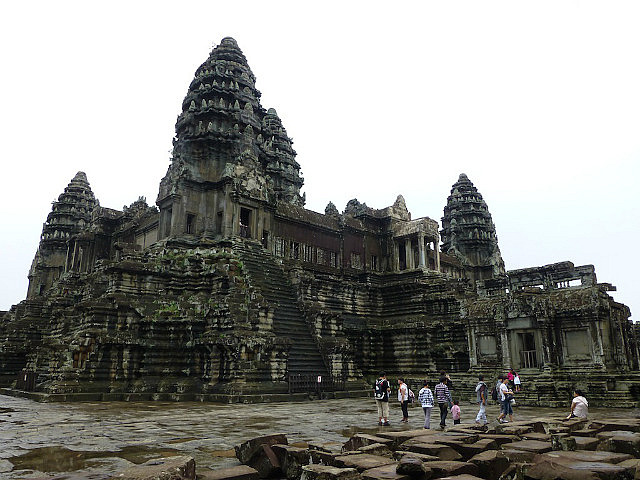
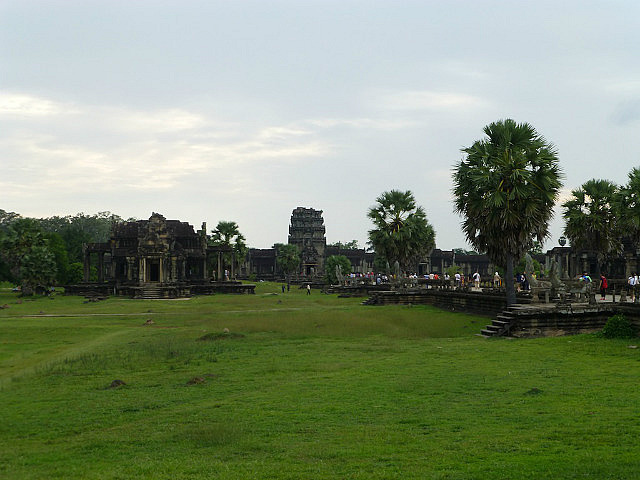
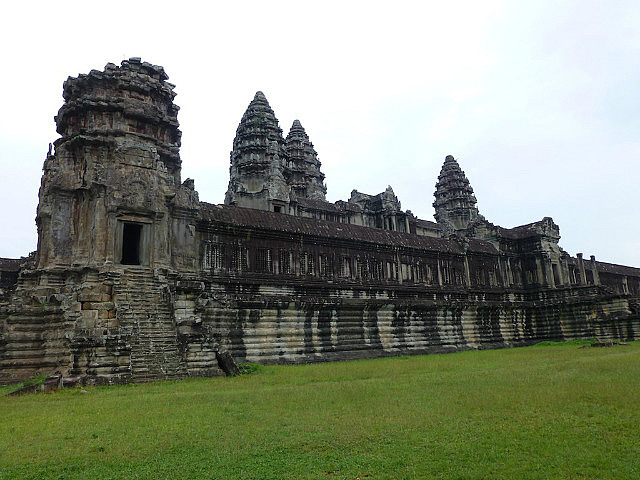
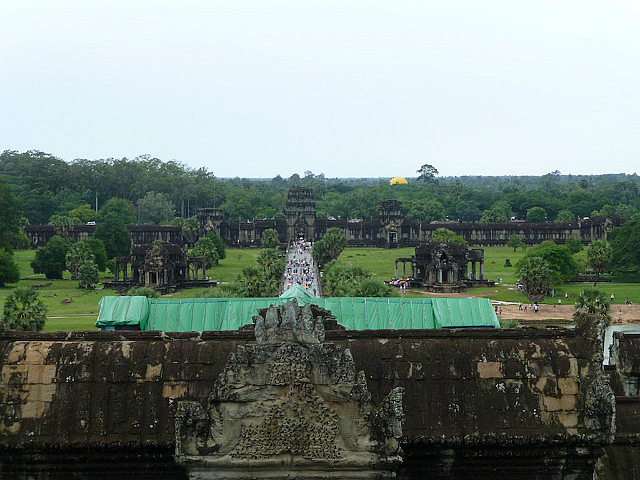
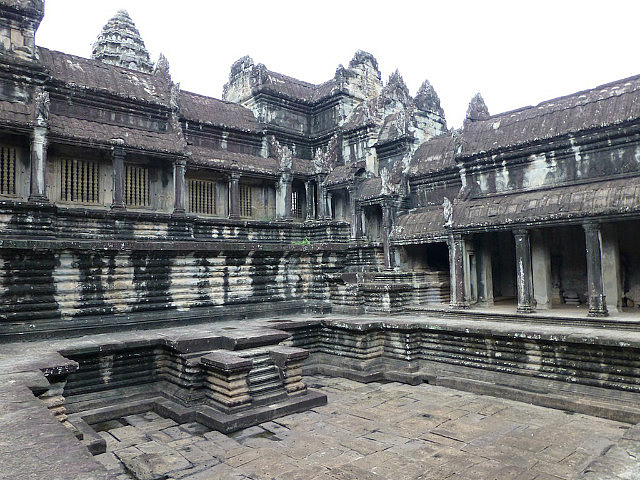
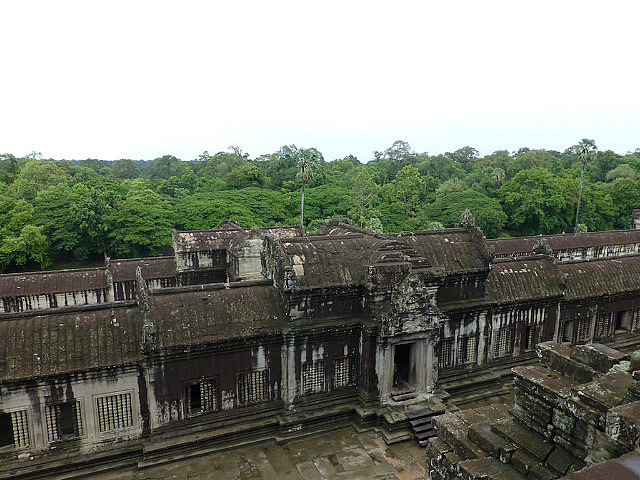
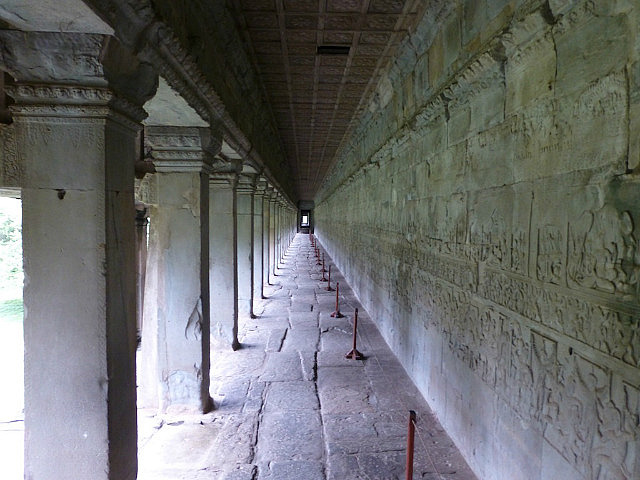
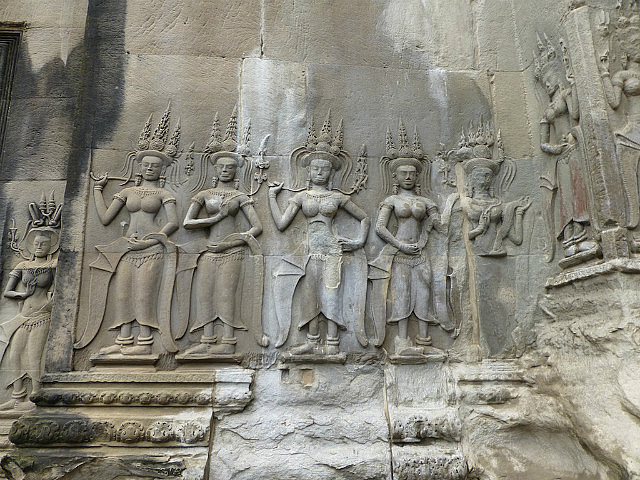
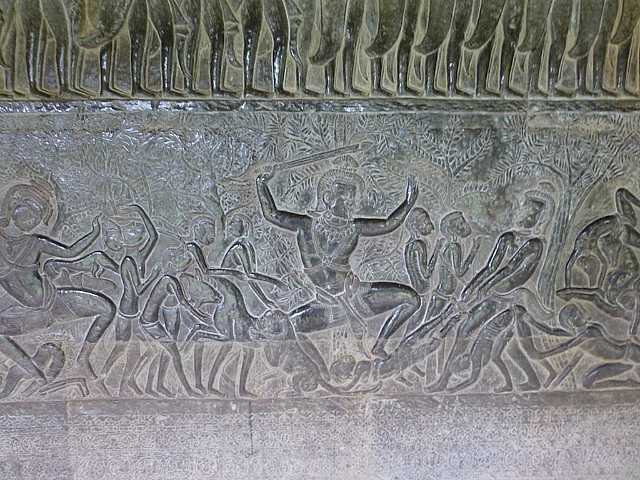

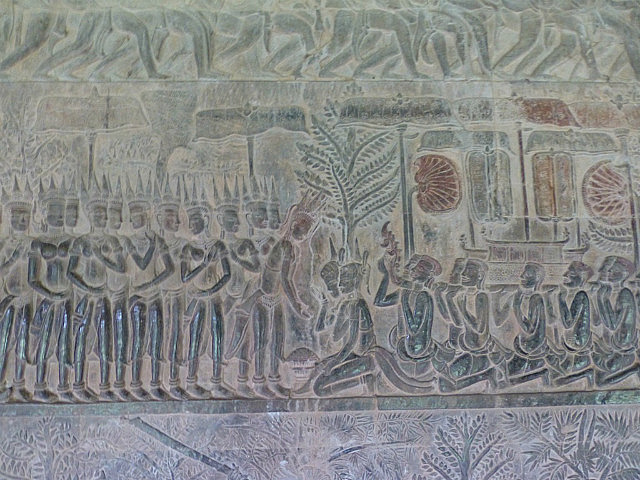
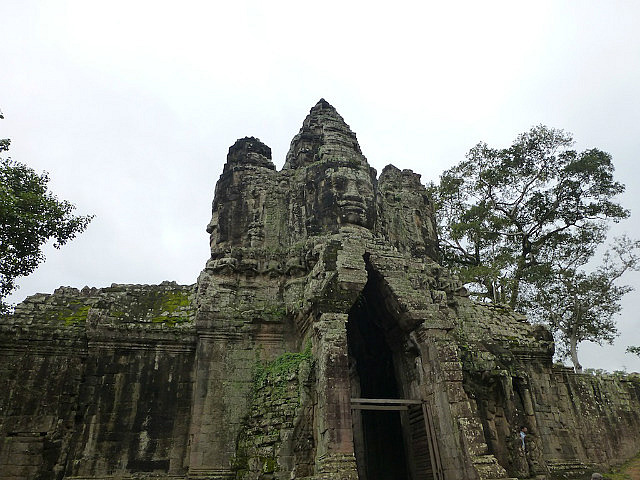
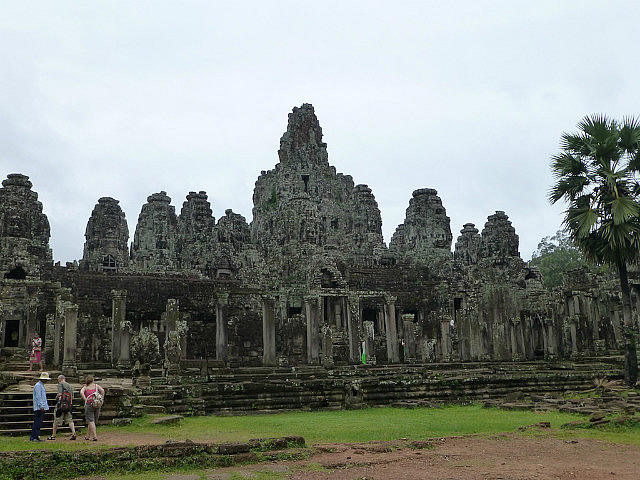
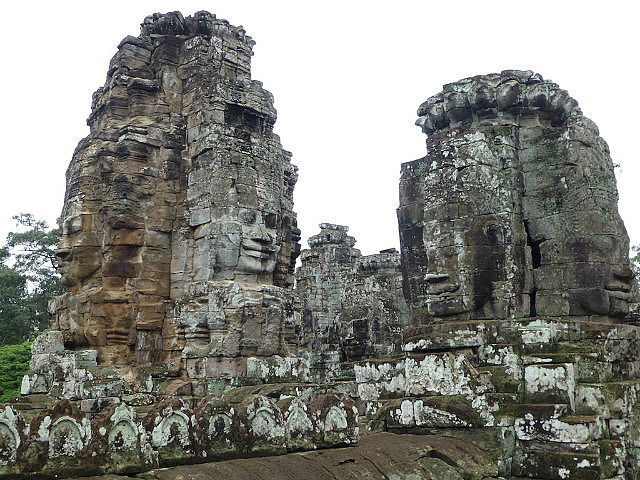
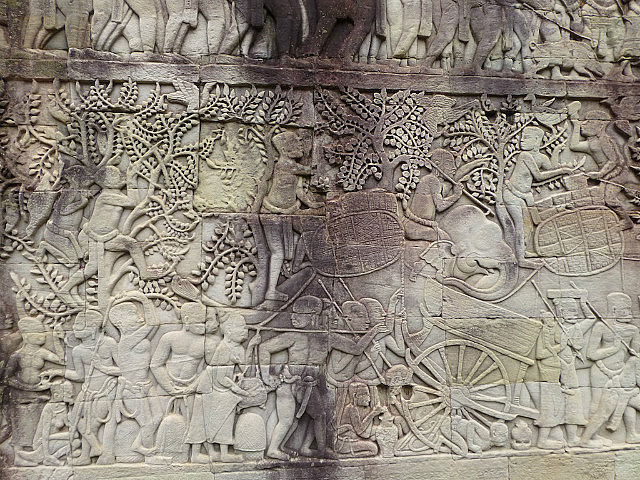
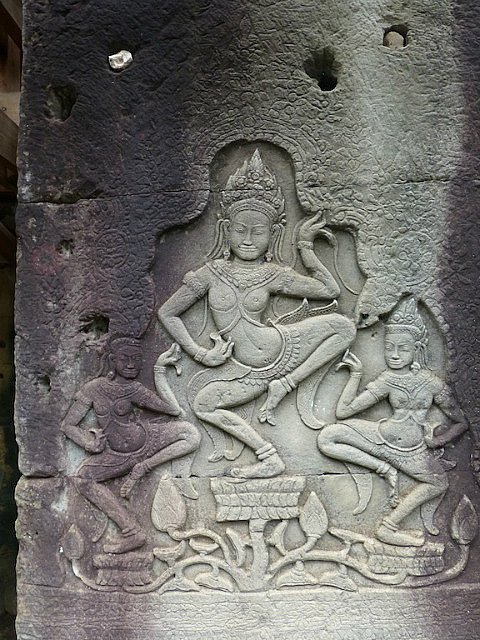
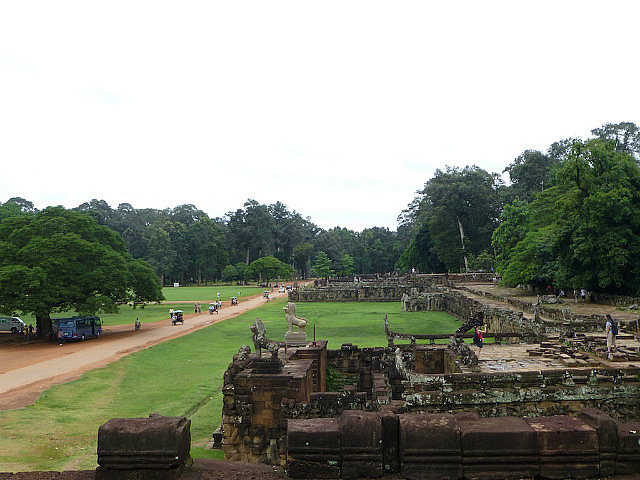
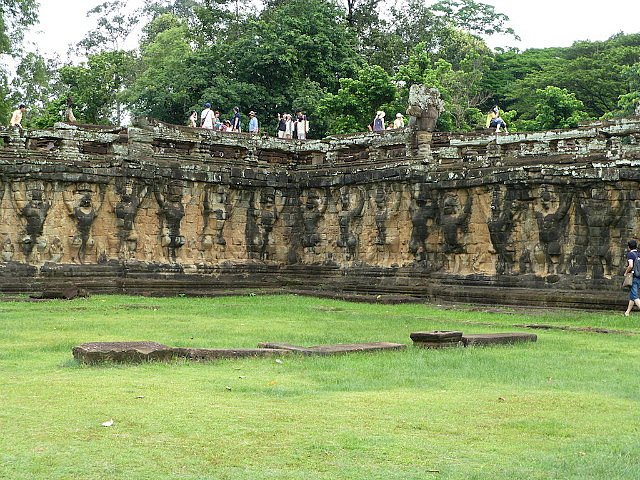

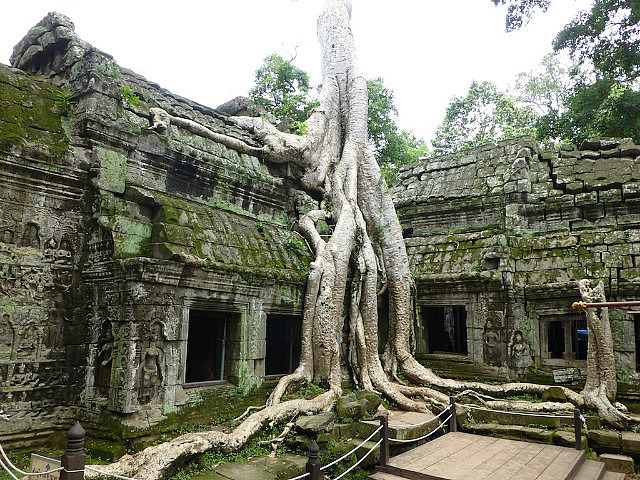
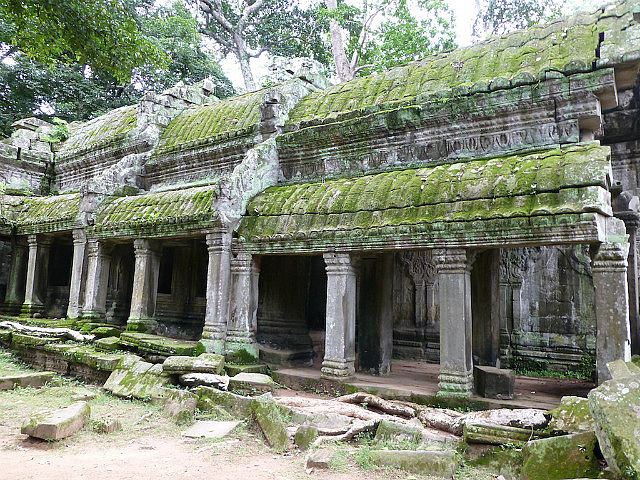
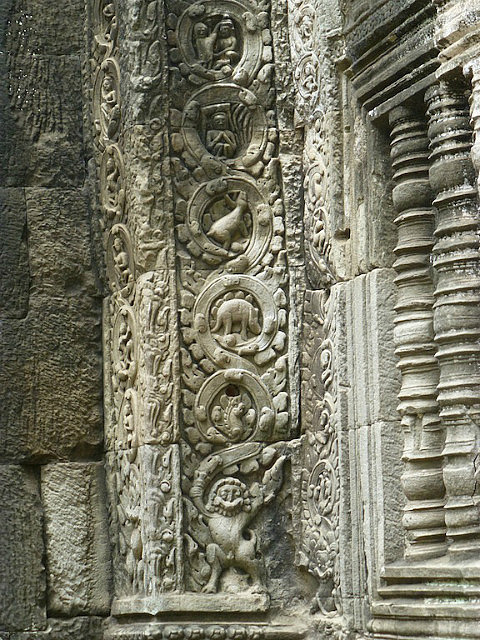
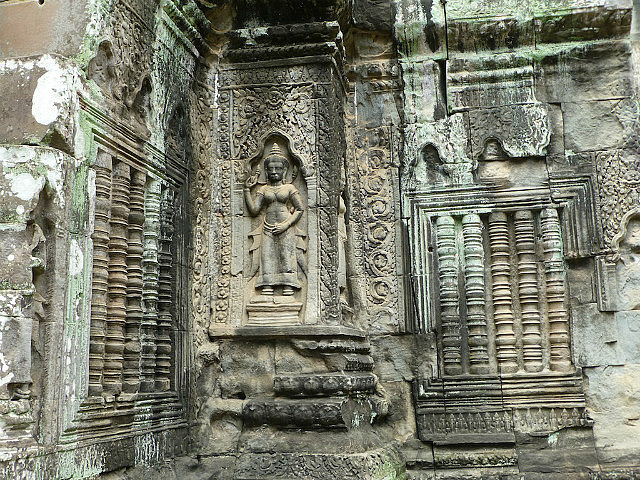
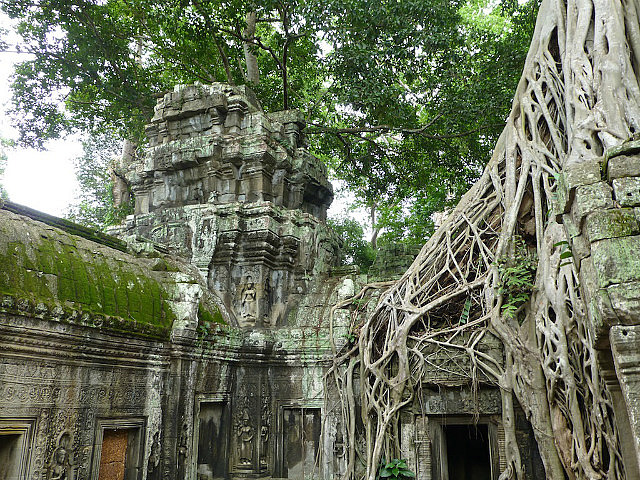
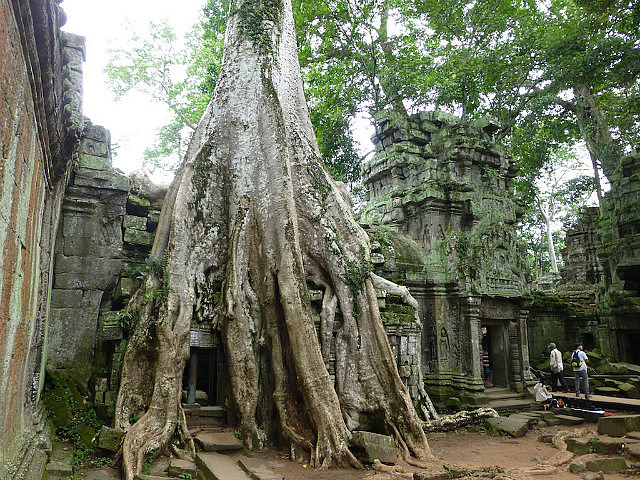
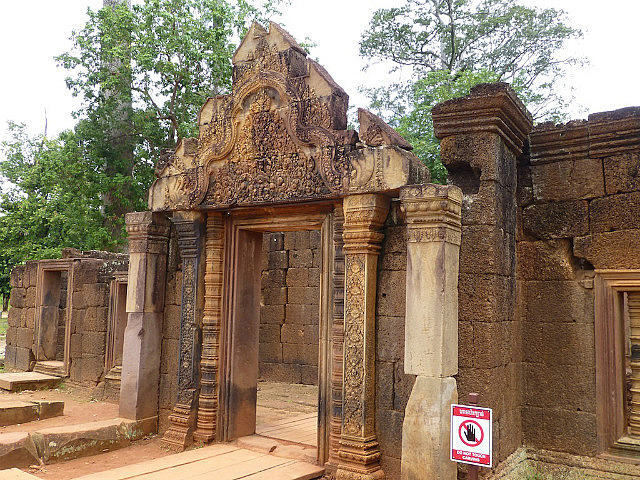
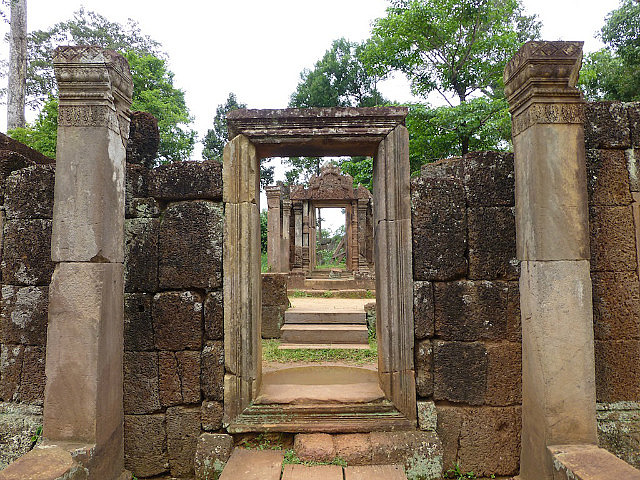
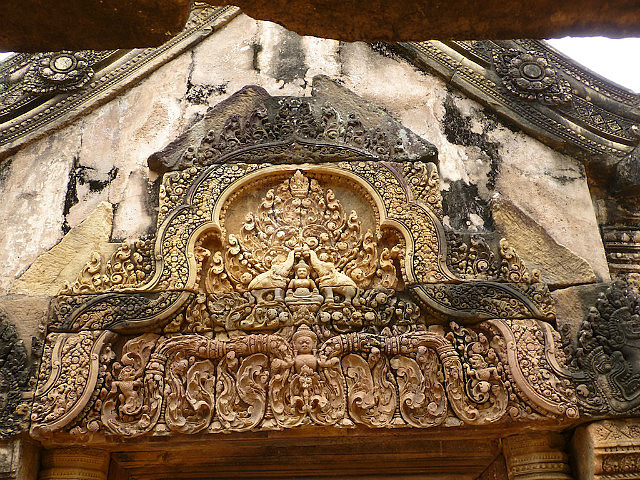


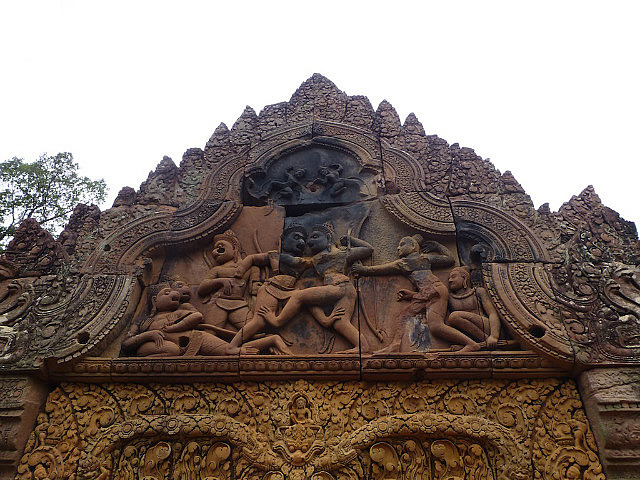
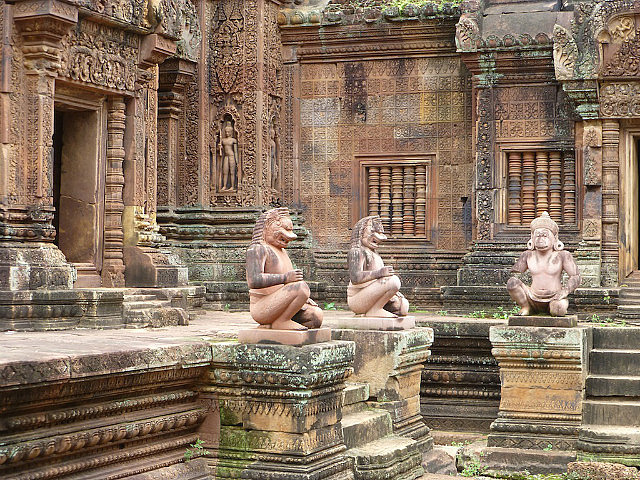


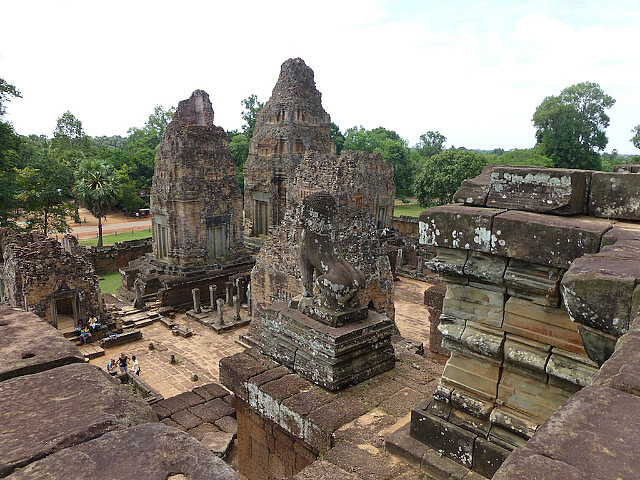


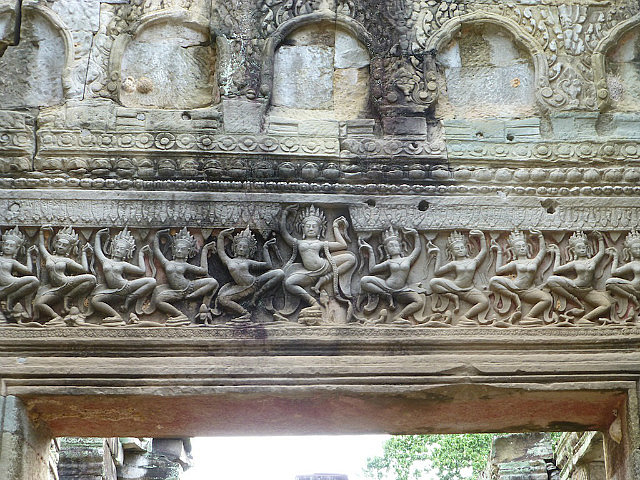
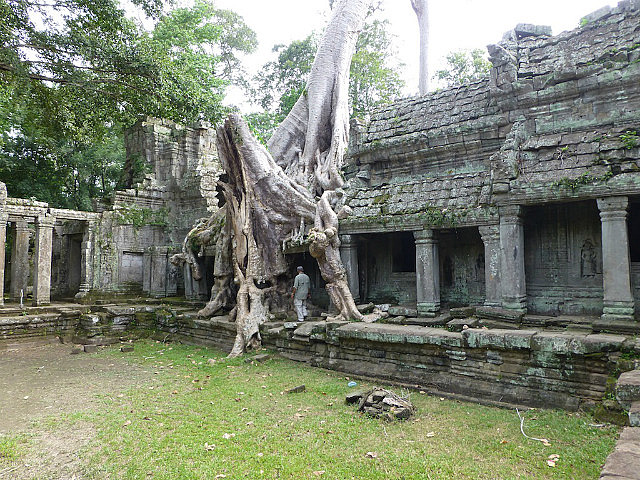

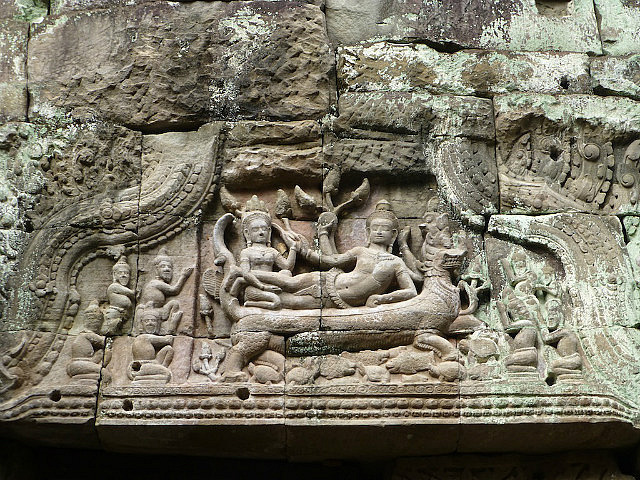
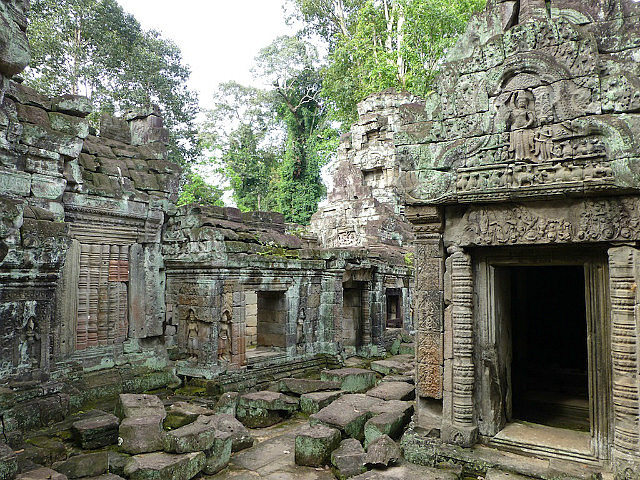
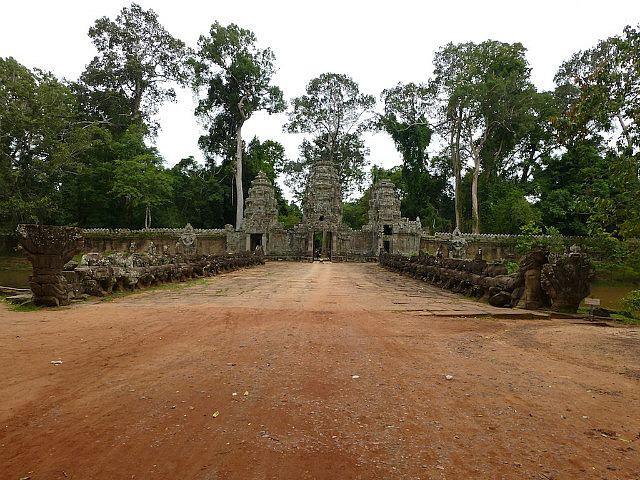
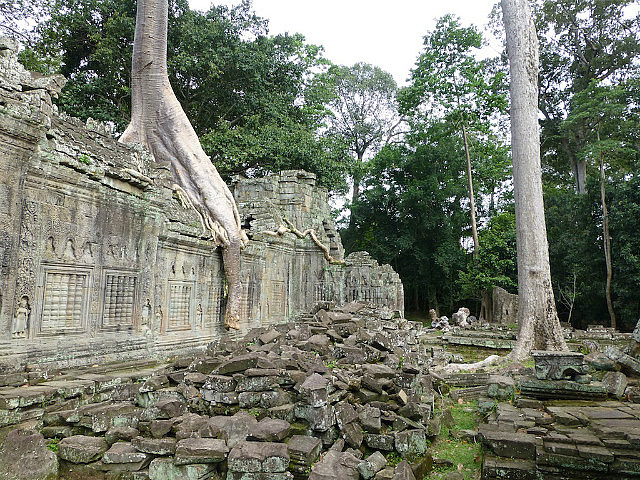
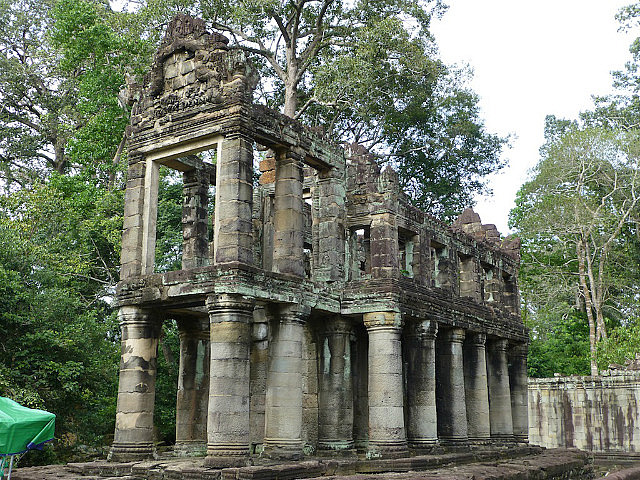
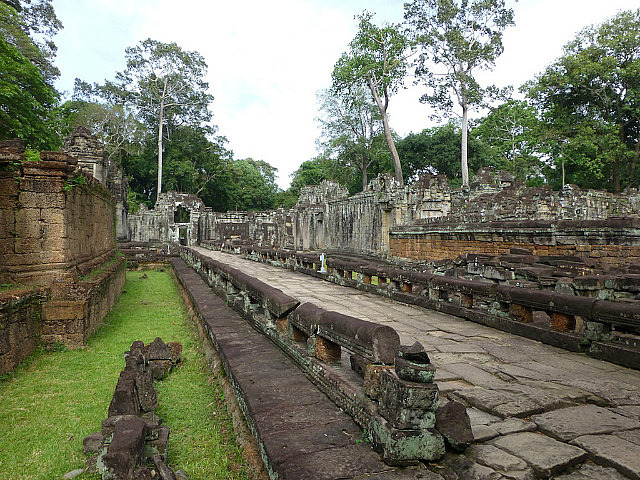

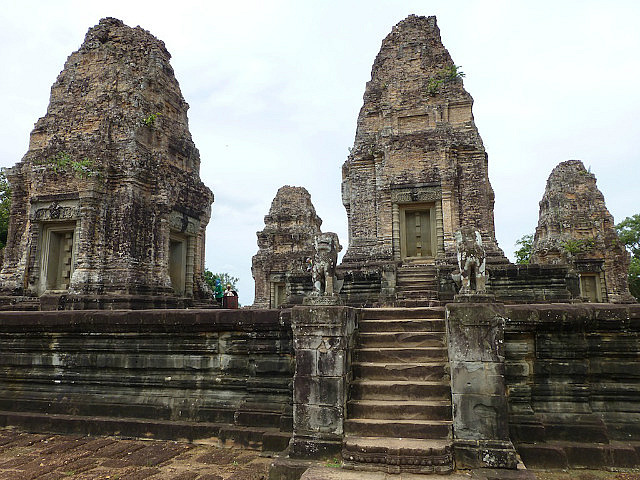
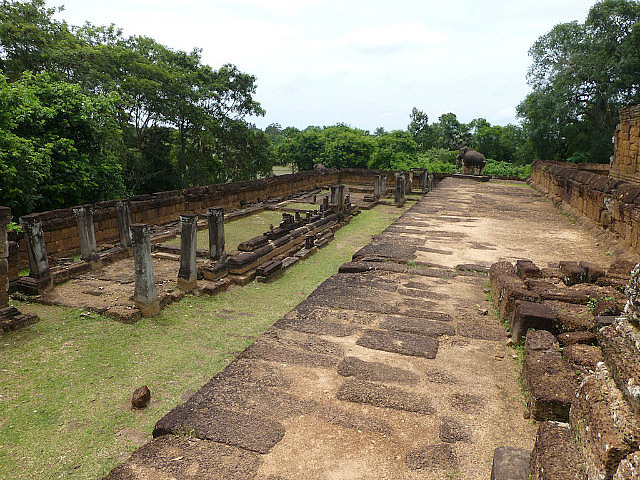

Comments